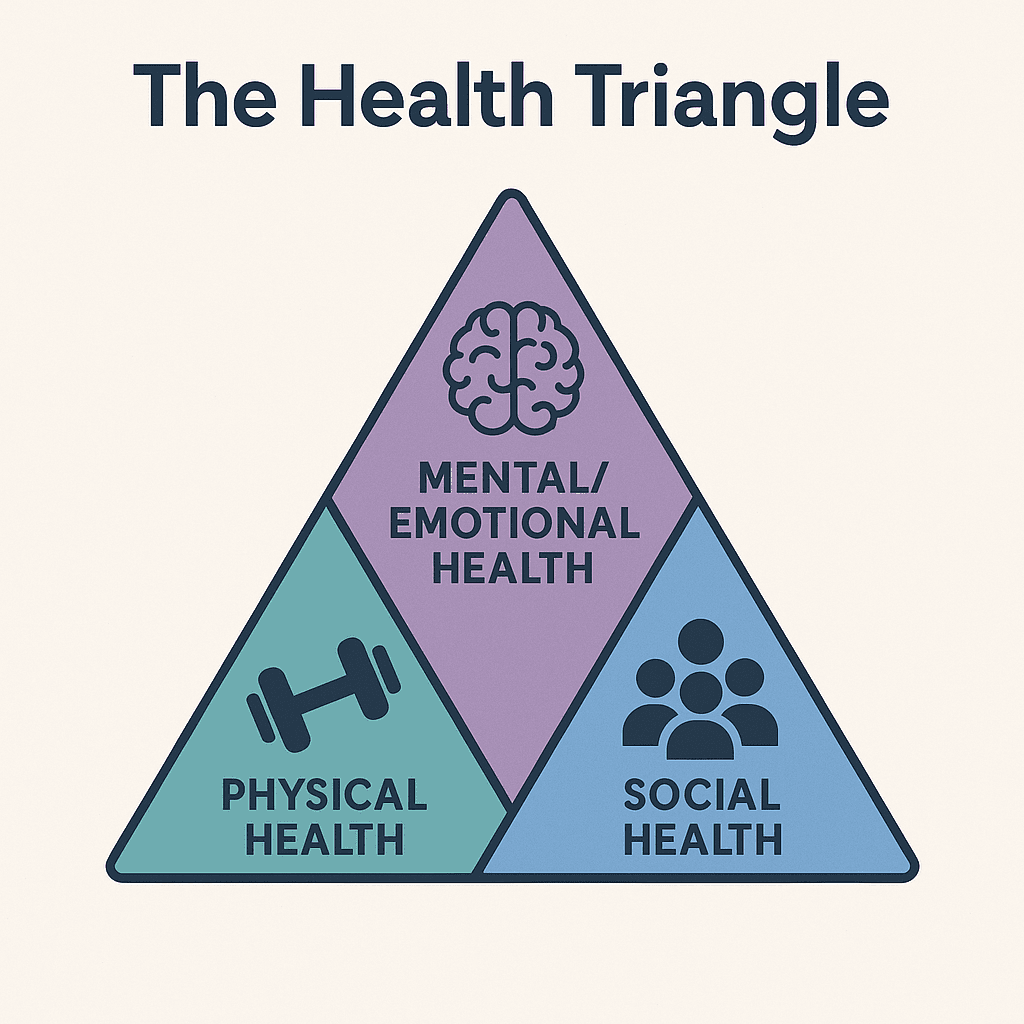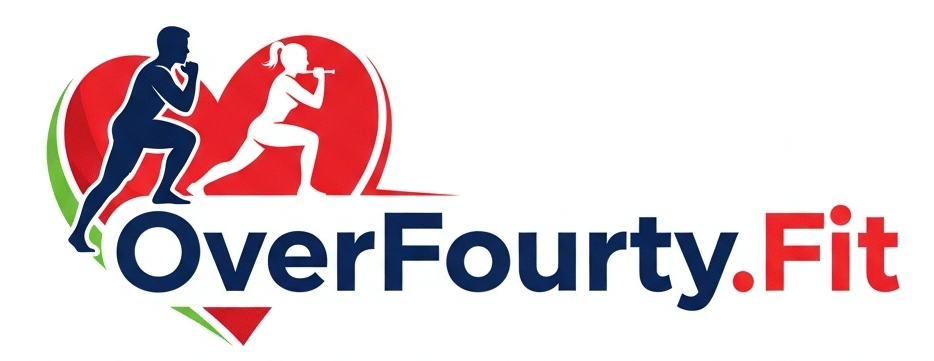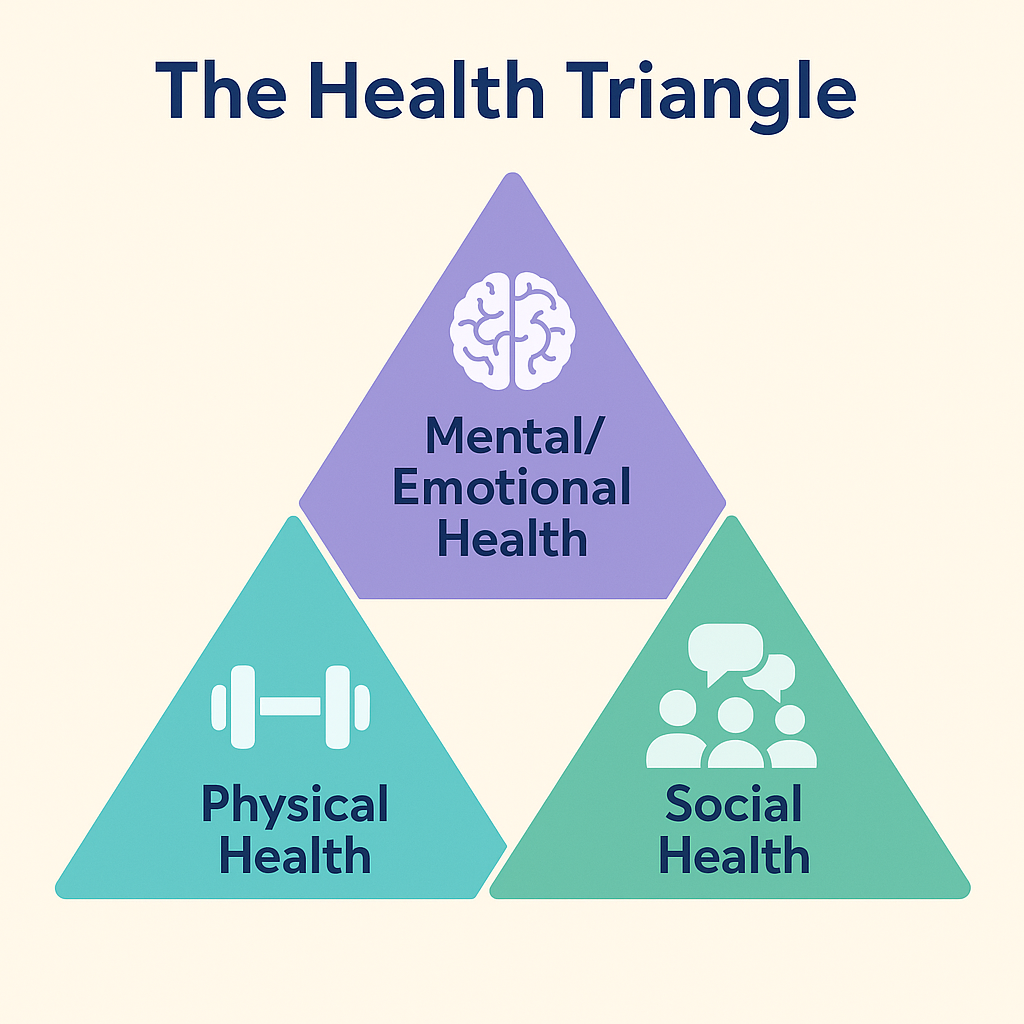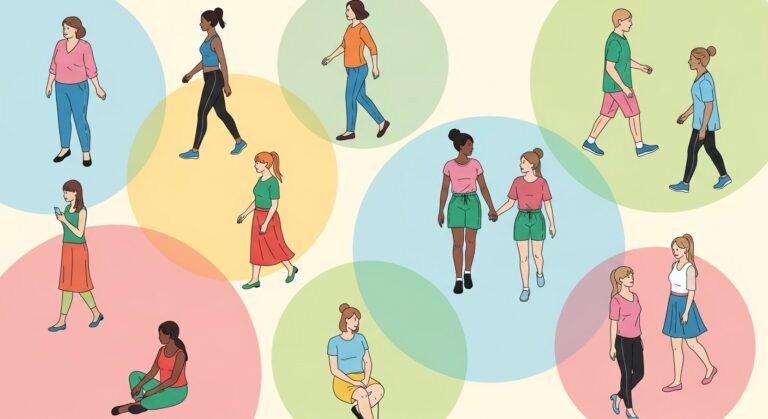Health Triangle: The Complete Guide to Balanced Wellbeing
The Health Triangle is a model that divides well-being into three interconnected areas: physical, mental/emotional, and social health. Maintaining balance between all three is essential for true wellness.
If you’ve ever felt physically fit but emotionally drained, or socially active but physically sluggish, this guide will help you identify imbalances and create a personalized plan for holistic health.
Summary: Optimal health requires equal attention to body, mind, and relationships.

The 3 Parts of the Health Triangle
1. Physical Health
✔ Body function: Nutrition, exercise, sleep
✔ Warning signs: Chronic fatigue, frequent illness
✔ Quick fix: 30-min daily movement + hydration
2. Mental/Emotional Health
✔ Mind & feelings: Stress management, self-esteem
✔ Warning signs: Anxiety, mood swings, negativity
✔ Quick fix: Journaling + mindfulness (5–10 mins/day)
3. Social Health
✔ Relationships: Communication, support systems
✔ Warning signs: Isolation, constant conflict
✔ Quick fix: 1 meaningful connection daily
Imbalance Example:
A workaholic may have strong physical health (gym routine) but poor social health (no friendships).
The Health Functioning Triangle
This expanded view adds daily habits that connect all three sides:
| Habit | Physical | Mental | Social |
|---|---|---|---|
| Weekly meal prep | ✓ Nutrition | ✓ Reduces stress | ✓ Can involve family |
| Group workouts | ✓ Fitness | ✓ Mood boost | ✓ Connection |
| Digital detox | ✓ Better sleep | ✓ Less anxiety | ✓ More presence |
Pro Tip: Habits hitting 2–3 categories provide the most balance.
Signs of Poor Mental Health
Watch for these red flags in yourself or others:
- Emotional: Constant irritability, hopelessness
- Cognitive: Trouble concentrating, indecisiveness
- Behavioral: Social withdrawal, neglect of self-care
- Physical: Unexplained aches, appetite changes
When to Seek Help:
If symptoms last 2+ weeks and disrupt work/relationships.
The Basics of Health (Triangle Edition)
- Move Daily – Walk, stretch, strength train
- Nourish Mindfully – Eat whole foods, stay hydrated
- Connect Often – Prioritize quality relationships
- Rest Adequately – 7–9 hours sleep nightly
- Check-In Weekly – Assess all three triangle areas
1. What Are the Three Parts of Your Health Triangle?
The health triangle consists of three interconnected dimensions that create complete wellbeing:
- Physical Health
- Refers to the body’s condition and ability to function
- Key components:
✔ Nutrition (balanced diet, hydration)
✔ Exercise (150+ mins weekly of moderate activity)
✔ Sleep (7-9 hours nightly)
✔ Medical care (preventive checkups)
- Mental/Emotional Health
- Involves psychological and emotional well-being
- Key components:
✔ Stress management
✔ Positive self-esteem
✔ Emotional resilience
✔ Healthy thought patterns
- Social Health
- Relates to interpersonal relationships and community connections
- Key components:
✔ Quality friendships
✔ Family bonds
✔ Workplace relationships
✔ Community involvement
Why All Three Matter:
Research shows that neglecting one area negatively impacts the others. For example:
- Poor social health → 29% increased risk of heart disease (Harvard Study)
- Chronic stress (mental) → weakens the immune system (physical)
2. What Is the Health Functioning Triangle?
The Health Functioning Triangle is an applied version of the model that shows how daily habits influence all three health dimensions simultaneously:
| Sample Habit | Physical Benefit | Mental Benefit | Social Benefit |
|---|---|---|---|
| Walking with a friend | Improves cardiovascular health | Reduces stress hormones | Strengthens relationships |
| Family meal prep | Better nutrition | Creates routine/security | Builds family bonds |
| Group meditation | Lowers blood pressure | Enhances focus | Creates community |
Key Difference From Basic Model:
While the original triangle simply identifies the three areas, the functioning triangle demonstrates how specific actions create ripple effects across all dimensions.
3. What Are Signs of Bad Mental Health?
Recognizing these warning signs can help prevent more serious issues:
Emotional Signs:
- Persistent sadness or hopelessness
- Excessive worry or fear
- Extreme mood swings
Cognitive Signs:
- Difficulty concentrating
- Memory problems
- Negative self-talk
Behavioral Signs:
- Social withdrawal
- Neglect of personal hygiene
- Changes in eating/sleeping patterns
Physical Signs:
- Unexplained aches/pains
- Low energy
- Digestive issues
When to Seek Help:
Consult a professional if symptoms:
- Last more than 2 weeks
- Interfere with work/school
- Include thoughts of self-harm
Self-Care First Steps:
- Practice 4-7-8 breathing (inhale 4 sec, hold 7, exhale 8)
- Establish a sleep routine
- Reach out to one trusted person
4. What Are the Basics of Health?
These five fundamentals support all sides of the health triangle:
- Movement
- Minimum: 30 mins daily moderate activity
- Ideal mix: Cardio + strength + flexibility
- Nutrition
- Follow the 80/20 rule (80% whole foods)
- Stay hydrated (½ oz water per lb body weight)
- Sleep
- 7-9 hours nightly
- Consistent bedtime/wake time
- Stress Management
- Daily mindfulness (even 5 minutes)
- Healthy boundaries
- Social Connection
- Meaningful interactions (not just social media)
- Community involvement
Pro Tip: Track these basics weekly using:
Sleep tracker
Food/mood journal
Activity log
FAQs About Health Triangle
What are the three parts of your health triangle?
Physical, mental/emotional, and social health—all equally important.
What is the health functioning triangle?
A practical version linking daily habits to all three health areas.
What are the signs of bad mental health?
Persistent sadness, fatigue, isolation, or irrational fears.
What are the basics of health?
Regular movement, nutritious eating, strong relationships, and stress management.







